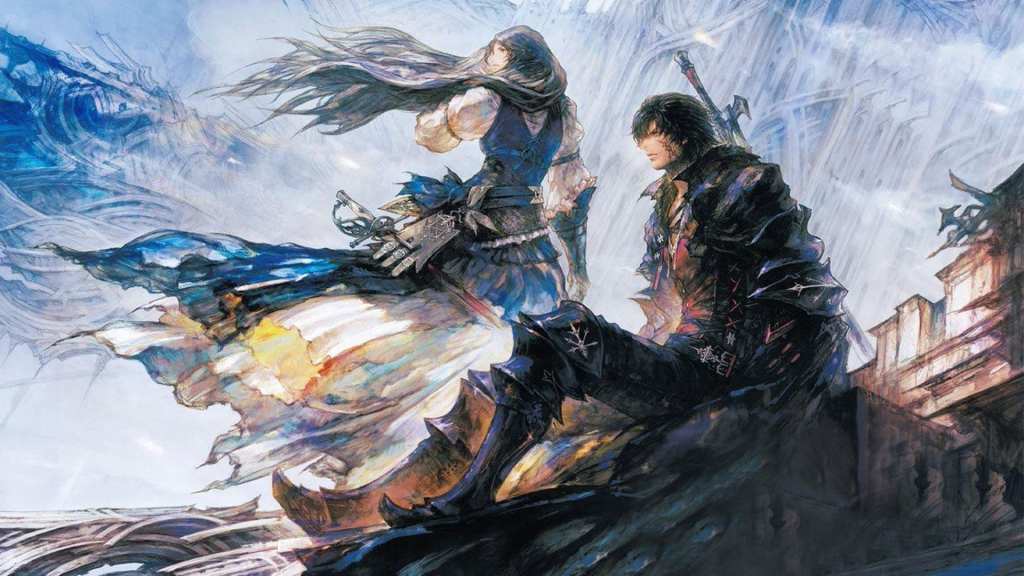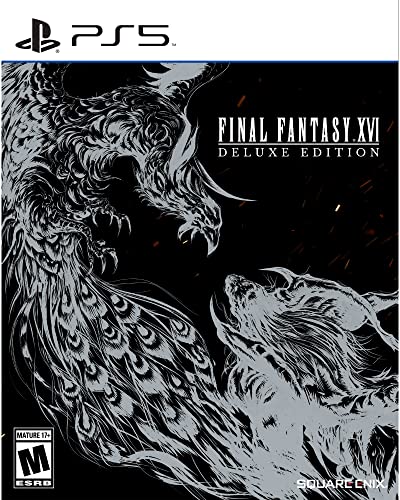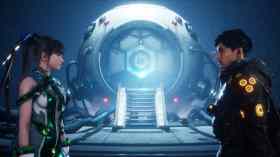The planet’s dying, Clive. The land of Valisthea is teetering on the brink of collapse, and not enough people realise how dire things are. Nations have been over-reliant on a magical energy source, and they don’t seem to realise just how limited and destructive it is. Never-ending warfare means the cost of living is skyrocketing; meanwhile, the skilled workers that keep society functioning are being exploited and abused, even killed, by the upper echelons of society. This is the imaginative and entirely fictitious world where Final Fantasy 16 is set.
It’s a compelling narrative, and Final Fantasy 16 explores many facets of these salient themes – from their impact on relatively unimportant individuals to their broad-reaching influences on the greater world. And despite cushioning it all from our harsh reality by situating it within a very British, grimdark high fantasy setting (that also happens to feature giant chickens you ride on), Final Fantasy 16 doesn’t shy from taking a clear stance on the world.
Even though each numbered entry in the Final Fantasy anthology is distinct from one another, Final Fantasy 16 successfully upholds the series trend of telling a tale that is grand and compelling, yet also earnest and character-driven. It’s perhaps one of the most intimate and personal stories in the series, to its credit, revolving around only a small core cast of characters, with the main throughline of the journey largely undertaken with its solo protagonist, or with one other human companion, sometimes two, briefly.
Central to the story is Clive Rosefield (Ben Starr), a once-noble figure whose circumstances find him spending much of his young adult life as a slave, and slowly opening his eyes to a whole new worldview as the politics of his land evolve. But though you are made to feel invested in Clive’s development, his distant demeanour makes him far from the most compelling character.
Rather, those accolades largely fall on the band of guerilla misfits Clive finds himself in cahoots with, led by the gruff and aloof Cid (Ralph Ineson). Cid’s charisma transcends the screen to effortlessly win over both yourself and Clive, and it’s Cid and his associates – all seem to be cut from a very particular cloth, in stark contrast to Clive and his more muted childhood friends, who also come along for the ride – who are a key factor in motivating you to stay strapped in to what becomes a very high-stakes journey across several decades.
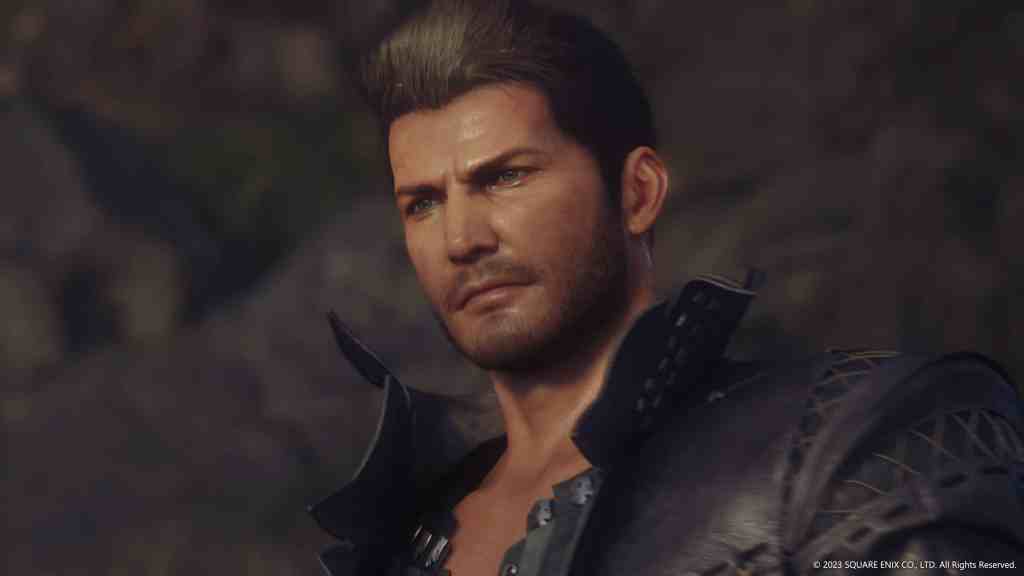
That journey is an ongoing epic-length cavalcade of fast-paced fighting action, world-shattering cinematic clashes between giants, and consistently stunning scenery. It’s a rollercoaster ride – for better and worse.
Devil May Clive
The defining mechanic of Final Fantasy 16 is its real-time combat system, which eschews almost all of the RPG systems that defined its predecessors, transforming the game’s identity into a style-focussed character action game above all else – combat director Ryota Suzuki has had a long history of involvement in action games, including the excellent Devil May Cry 5.
Functionally, Clive has a dedicated melee attack button, which can dole out a simple five-hit combo string when pressed repeatedly, a generic projectile attack button, and a jump. With button combinations, he can also perform actions like lunges, downward strikes, and charged attacks. Useful defensive techniques like parries and dodges challenge your timing and bravery, but the crown jewels of the system are a series of interchangeable ‘Eikon’ movesets, a variety of which can be equipped in up to nine additional combat ability slots.
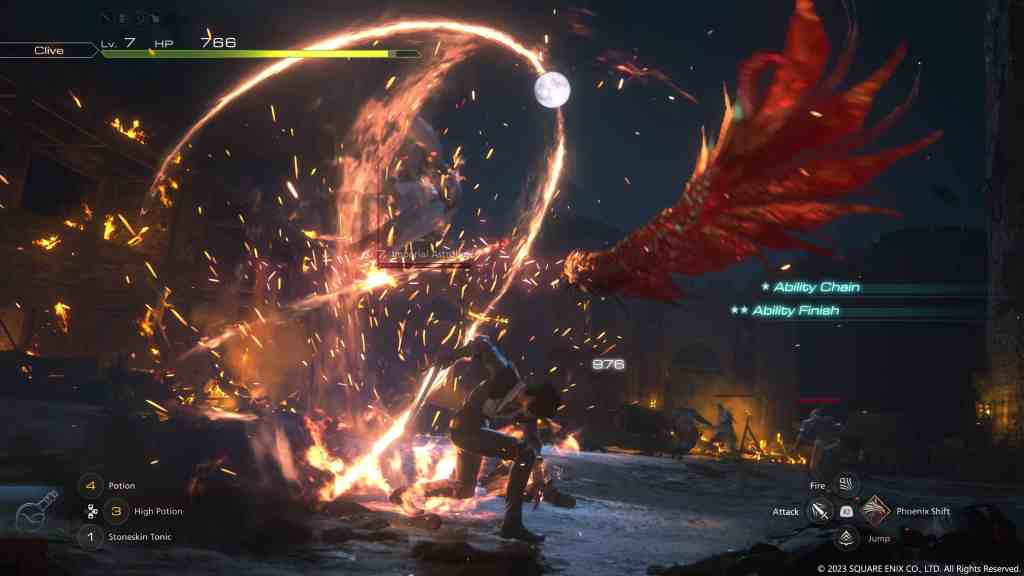
When you’re in the meat of Final Fantasy 16’s roughly 70-hour runtime, the combat system sings. With a wealth of options to customise your personal approach, you internalise a flowchart of the best actions to perform in certain situations, and the most optimal chain of complementary attacks to whittle down an enemy’s stagger meter, which leaves them temporarily defenceless, and opens them up to an onslaught. At its finest, which is most of the time, Final Fantasy 16‘s real-time combat system has an incredibly morish quality, full of style and flair, like the best examples of its influences.
However, in typical Final Fantasy fashion, it can take a while to get to that point. During the game’s opening dozen hours, and in some of the late-game battles against particularly hardy foes, Final Fantasy 16’s reveals the downside to its simplified, more streamlined approach to typically complex character action combat – repetition.
Before Clive actually gains the ability to equip a full suite of Eikon abilities, you’ll likely find yourself relying on his core five-hit combo quite a lot. If you’re feeling stylish, perhaps you’ll pepper it with a few flourishes here and there, like a burst of magic between hits, or perhaps taking things to the air with the help of his canine companion, Torgal. But no matter how creative you are, the options for mixing things up are few, especially when your Eikon abilities are on a cooldown timer.
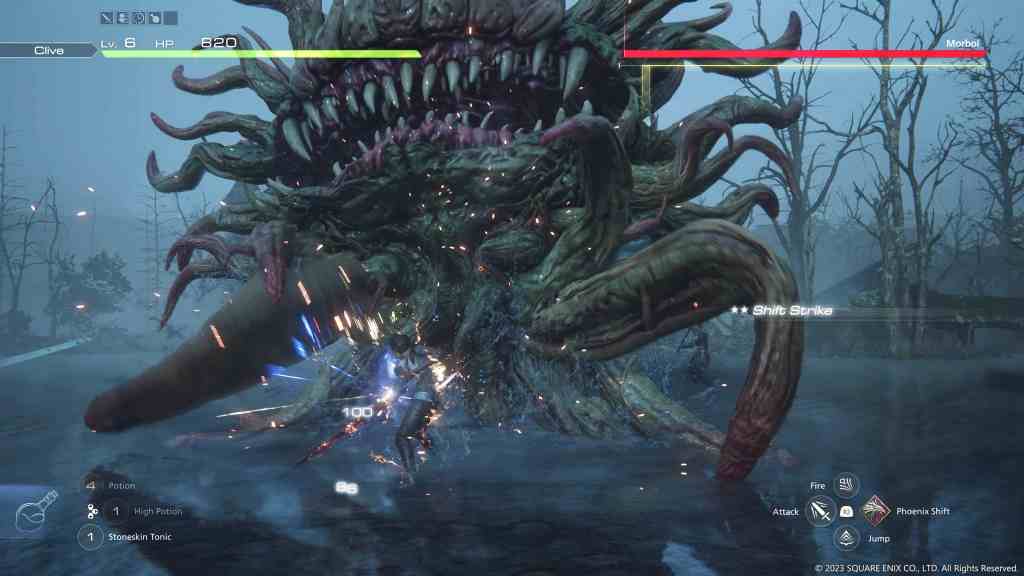
As the ability to equip more Eikon abilities comes to you, the variety begins to feel a lot healthier, though the occasional formidable foe during the late stages of the game raise similar issues – once you’ve exhausted your abilities, or rather, while you bide your time to wait for the most opportune time to unleash them, there aren’t enough core options or considerations to keep things interesting. Even the abilities, while representing different elements in appearance, seem to have no unique practical effects in battle.
And while they only appear throughout the game a handful of times, Final Fantasy 16’s cinematic Eikon battles – where Clive and his opponent embody the giant, kaiju-style beings that lay dormant within them in a fight of gargantuan proportions – are perhaps the most egregious indicators of these shortcomings.
The battles themselves are visually spectacular, with explosions of light, fire, and energy, and stirring orchestral accompaniments. Each step and attack shakes the earth, or has some similar devastating effect. But with an even smaller combat repertoire, and an even larger health bar to whittle down, these fights begin to feel fatiguing even when they’re only halfway complete – they’re battles of attrition more than anything else, though perhaps that’s intentional, given the physical toll it takes on the characters afterward.
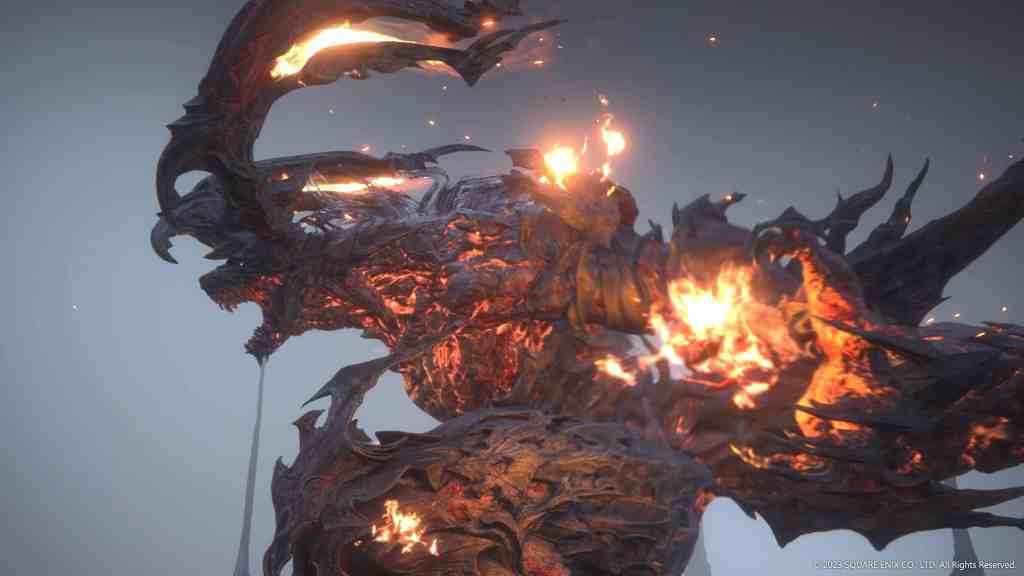
Is Final Fantasy 16 an Action Game or an RPG?
The game’s attempts to balance its newfound ‘character action’ direction and its traditional RPG roots create some oddities with other aspects of the game’s structure, too. Each questline and major fight is bookended with a pause in the events, sometimes a sudden, jarring one, to announce ‘Quest Completed’ or ‘Enemy Slain’, with a prerequisite experience tallying screen. While that might act as a nod to its RPG lineage, it lends itself more to the arcade-style level progression of character action games. Either way, it often comes as a sudden jolt that disrupts the flow of the otherwise compelling storytelling. The fact that there’s an arcade-style mode where you can revisit these portions of story as individual levels, complete with a scoring and leaderboard component, says something in itself.
Read: Final Fantasy 16 will have a New Game+ mode
The balance between genres also adds a whiplash effect to the pacing – between the game’s major beats, the heart-thumping action gives way to extended periods of downtime, where slowly jogging around your base of operations, chatting to people, and completing simple sidequest chores are the order of the moment.
The streamlined gear and inventory system, along with the focused selection of abilities, means the RPG-style equipment management in the game seems to only really exist to give the illusion of choice – major weapon upgrades are essentially given, and currency is in abundance, with new soundtrack options being the most enticing thing to spend it on. The various natural environments throughout the world all feel visually arresting and dramatically expansive – an aspect which makes revisiting them after significant plot events all the more impactful – but they’re in fact tightly fashioned like intricate dungeons, where you’re largely encouraged to skip the legwork with fast travel following your initial foray.
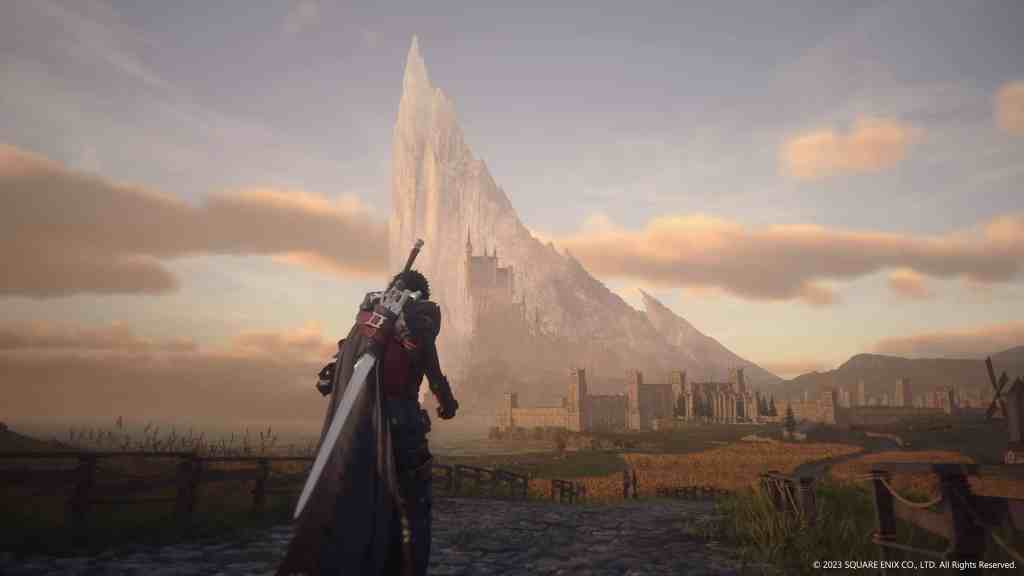
In opting for an action-packed rollercoaster ride, Final Fantasy 16 brings with it a fair share of slow climbs for every exciting dive, and is ultimately a single-track experience. It doesn’t feel like a role-playing experience – you cannot have ‘your’ version of Clive’s story, because there is virtually no room for deviation. This means Final Fantasy 16 feels refined and largely free of fluff, but it also feels like a paint-by-numbers affair.
Stay a while, and listen
That doesn’t diminish what is an incredible story, however, nor what great lengths developer Square Enix goes to tell it, making sure you’re never lost in jargon or unfamiliar names or concepts. In a world rich with its own complex politics, long histories, and countless new concepts, the game’s excellent Active Time Lore feature, which you can bring up at any point in the game, is there to give you succinct and easily digestible primers on the important characters and locations in play at that very moment.
As the events grow more significant later in the game, mandatory visits to a tactician help build familiarity with a summary of the state of the realm – the grand movements of factions, the results of battles, the passages of advancement and retreat – all of which help to paint a very crisp picture of the ambitious narrative it wants to tell. It also helps the forthcoming events feel more understandably meaningful.
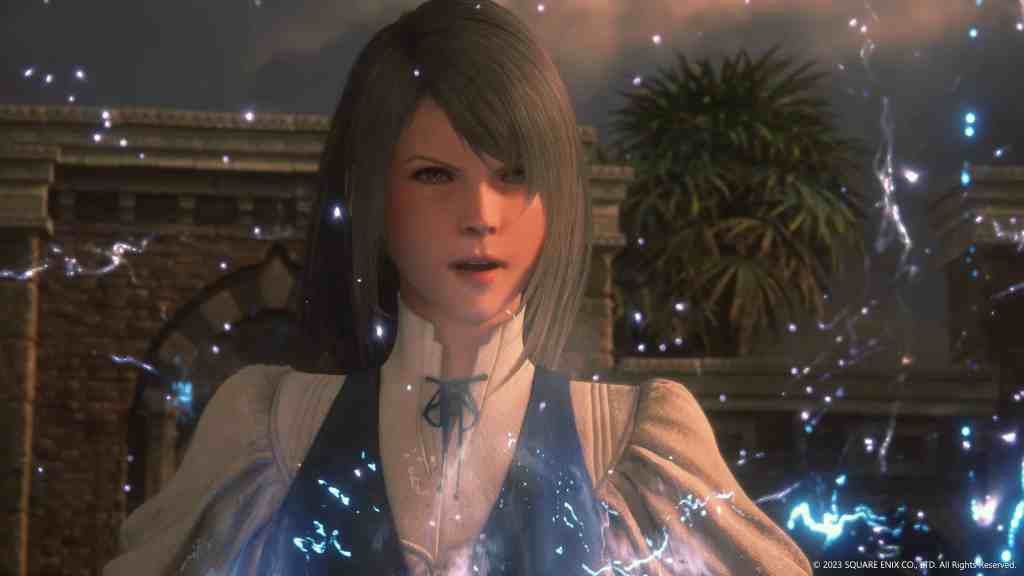
On the other side of the scale, the game’s many side quests, while largely menial and chore-like, all have something fulfilling to offer in the way of exploring intimate aspects of the game’s world, teaching you more about the people, cultural and socioeconomic conditions, and the innocuous yet charming details about how things work – all of which add just as much context and flavour to the world as the numerous tomes of history. It’s ultimately Final Fantasy 16’s dedication to telling the story of this intricate world that pushes you up those slow climbs, even when it shows its foibles – a bizarre and sudden damselling of an otherwise capable character, and a confusing approach to its desert nation, to name a few.
Final Fantasy 16 largely shines as an epic-length action game, though the places where it attempts to find a comfortable compromise between action game and RPG feel largely unambitious, and certainly fade into the background against aspects that are approached with gusto.
However, in the same way it’s hard not to grow a strong affinity for the roguish charms of Cid and the rest of his outlaws, despite their character flaws, it’s difficult not to get swept up by the earnest saga that Final Fantasy 16 eagerly lays out for you, and the egregious heights of spectacle it displays.
4 Stars: ★★★★
Final Fantasy 16
Platforms: PlayStation 5
Developer: Square Enix Creative Business Unit III
Publisher: Square Enix
Release Date: 22 June 2023
|
N/A
|
104,95 €
|
The PlayStation 5 version of Final Fantasy 16 was provided and played for the purposes of this review, which was originally published on 22 June 2023. GamesHub has affiliate partnerships. These do not influence editorial content. GamesHub may earn a small percentage of commission for products purchased via affiliate links.
